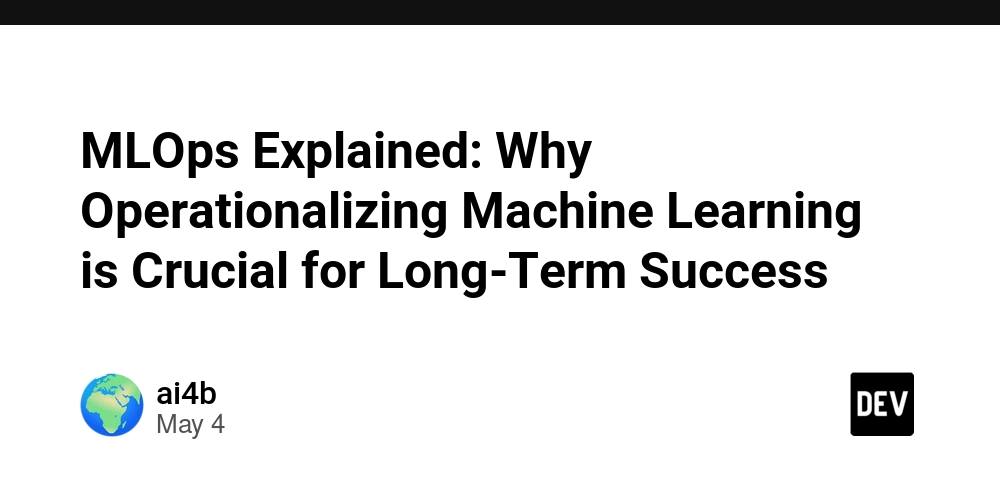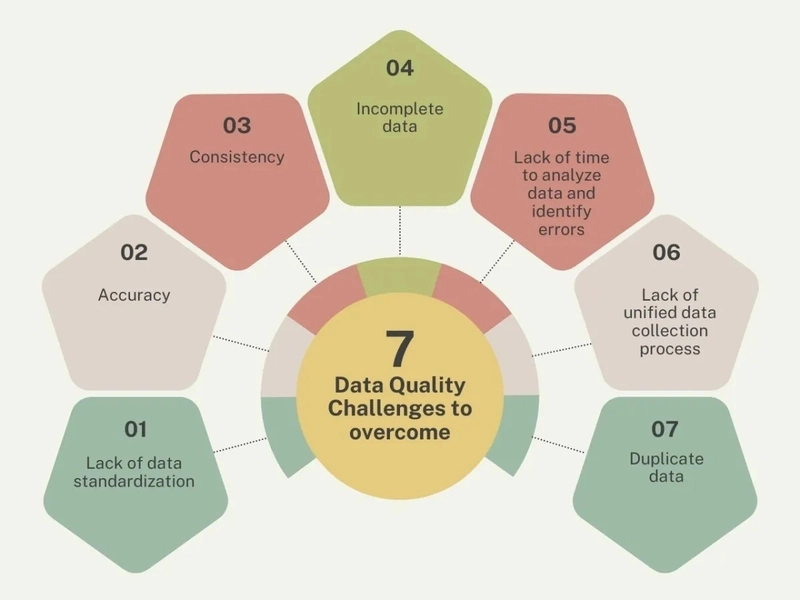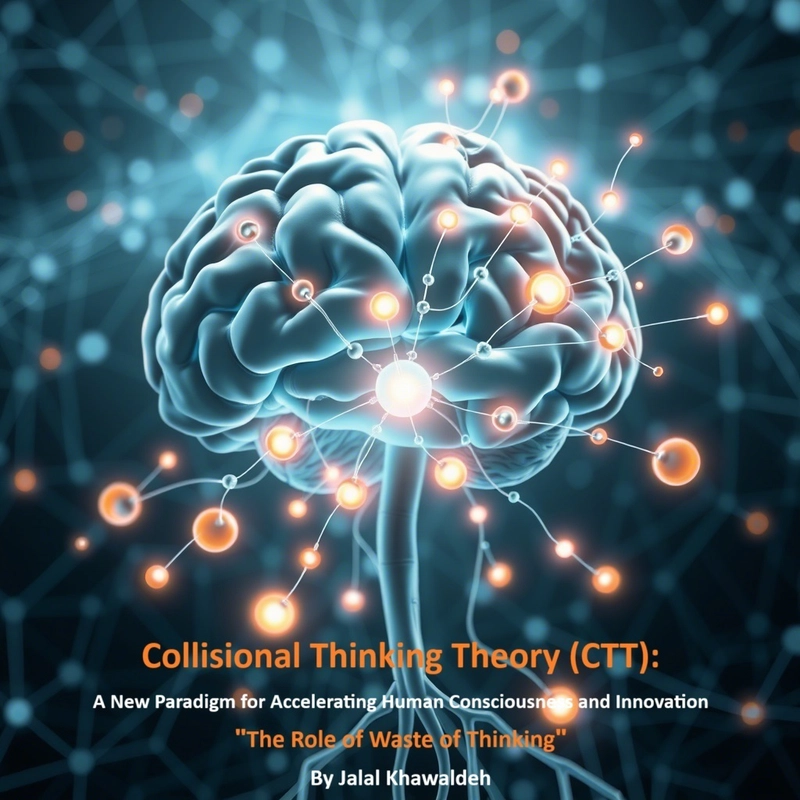MLOps Explained: Why Operationalizing Machine Learning is Crucial for Long‑Term Success
Introduction In the rapidly evolving landscape of artificial intelligence and machine learning, organizations face a critical challenge: how to transform promising machine learning models from experimental prototypes into robust, production-ready systems that deliver continuous business value. This is where Machine Learning Operations (MLOps) comes into play, serving as the bridge between innovation and practical implementation. Despite the significant investments in machine learning initiatives, many organizations struggle to realize the full potential of their ML projects. According to industry research, only 13-15% of machine learning models successfully make it to production, and among those that do, many fail to deliver the expected business outcomes over time. This troubling statistic points to a fundamental gap in how organizations approach machine learning implementation. This document explores the concept of MLOps, its key components, the challenges it addresses, and most importantly, why operationalizing machine learning through MLOps practices is not just beneficial but crucial for long-term success in the AI-driven business landscape. What is MLOps? Definition and Scope Machine Learning Operations (MLOps) is a set of practices, tools, and cultural principles that aims to streamline and automate the end-to-end lifecycle of machine learning systems in production environments. MLOps extends the DevOps philosophy to the domain of machine learning, recognizing the unique challenges posed by ML systems compared to traditional software. MLOps addresses the entire machine learning lifecycle, from data collection and preparation to model training, deployment, monitoring, and continuous improvement. It bridges the gap between data science and IT operations, creating a unified framework that ensures machine learning models can be deployed reliably, efficiently, and at scale. The Evolution from DevOps to MLOps While MLOps shares some common principles with DevOps, it also introduces new considerations specific to machine learning workflows: DevOps Focus: Code-centric approach Primarily deals with deterministic systems Focuses on application deployment and infrastructure management Testing is primarily for functionality and performance MLOps Additional Concerns: Data-centric and model-centric approach Handles probabilistic systems with non-deterministic outputs Manages data pipelines, feature stores, and model artifacts Must account for data drift and concept drift Requires specialized monitoring for model performance Involves continuous training and retraining of models Needs additional governance and explainability frameworks This evolution reflects the increased complexity of machine learning systems, which must not only function correctly as software but also maintain their predictive accuracy and relevance in dynamic, real-world environments. The Machine Learning Lifecycle and MLOps Components The machine learning lifecycle encompasses multiple stages, each with its own challenges and requirements. MLOps provides structure and automation to this lifecycle, ensuring that each stage is well-managed and integrated into a cohesive workflow. Key Stages in the ML Lifecycle Data Management and Preparation Data collection and ingestion Data cleaning and validation Feature engineering and transformation Data versioning and lineage tracking Model Development and Experimentation Experiment tracking and management Hyperparameter tuning Model validation and testing Model versioning Model Deployment Model packaging and containerization CI/CD pipeline integration Model serving infrastructure Deployment strategies (blue-green, canary, etc.) Monitoring and Maintenance Performance monitoring Drift detection (data and concept drift) Alerting and incident response Feedback loops and model updates Automated retraining Core Components of MLOps Version Control System A robust version control system is fundamental to MLOps, tracking changes not just in code, but also in data, models, and configurations. This ensures reproducibility and facilitates collaboration among team members. CI/CD for Machine Learning Continuous Integration and Continuous Deployment pipelines automate the testing, validation, and deployment of machine learning models, ensuring that only high-quality models reach production. Data and Feature Stores Centralized repositories for storing, managing, and serving features for machine learning models. These systems ensure consistency between training and serving environments and enable feature reuse across multiple models. Model Registry A central repository for storing trained models along with their metadata, performance metrics, and lineage information. The model registry facilitates model governance, deployment, and rollback operations. Model Serving Infrastructure Scalable systems for deployi

Introduction
In the rapidly evolving landscape of artificial intelligence and machine learning, organizations face a critical challenge: how to transform promising machine learning models from experimental prototypes into robust, production-ready systems that deliver continuous business value. This is where Machine Learning Operations (MLOps) comes into play, serving as the bridge between innovation and practical implementation.
Despite the significant investments in machine learning initiatives, many organizations struggle to realize the full potential of their ML projects. According to industry research, only 13-15% of machine learning models successfully make it to production, and among those that do, many fail to deliver the expected business outcomes over time. This troubling statistic points to a fundamental gap in how organizations approach machine learning implementation.
This document explores the concept of MLOps, its key components, the challenges it addresses, and most importantly, why operationalizing machine learning through MLOps practices is not just beneficial but crucial for long-term success in the AI-driven business landscape.
What is MLOps?
Definition and Scope
Machine Learning Operations (MLOps) is a set of practices, tools, and cultural principles that aims to streamline and automate the end-to-end lifecycle of machine learning systems in production environments. MLOps extends the DevOps philosophy to the domain of machine learning, recognizing the unique challenges posed by ML systems compared to traditional software.
MLOps addresses the entire machine learning lifecycle, from data collection and preparation to model training, deployment, monitoring, and continuous improvement. It bridges the gap between data science and IT operations, creating a unified framework that ensures machine learning models can be deployed reliably, efficiently, and at scale.
The Evolution from DevOps to MLOps
While MLOps shares some common principles with DevOps, it also introduces new considerations specific to machine learning workflows:
DevOps Focus:
- Code-centric approach
- Primarily deals with deterministic systems
- Focuses on application deployment and infrastructure management
- Testing is primarily for functionality and performance
MLOps Additional Concerns:
- Data-centric and model-centric approach
- Handles probabilistic systems with non-deterministic outputs
- Manages data pipelines, feature stores, and model artifacts
- Must account for data drift and concept drift
- Requires specialized monitoring for model performance
- Involves continuous training and retraining of models
- Needs additional governance and explainability frameworks
This evolution reflects the increased complexity of machine learning systems, which must not only function correctly as software but also maintain their predictive accuracy and relevance in dynamic, real-world environments.
The Machine Learning Lifecycle and MLOps Components
The machine learning lifecycle encompasses multiple stages, each with its own challenges and requirements. MLOps provides structure and automation to this lifecycle, ensuring that each stage is well-managed and integrated into a cohesive workflow.
Key Stages in the ML Lifecycle
-
Data Management and Preparation
- Data collection and ingestion
- Data cleaning and validation
- Feature engineering and transformation
- Data versioning and lineage tracking
-
Model Development and Experimentation
- Experiment tracking and management
- Hyperparameter tuning
- Model validation and testing
- Model versioning
-
Model Deployment
- Model packaging and containerization
- CI/CD pipeline integration
- Model serving infrastructure
- Deployment strategies (blue-green, canary, etc.)
-
Monitoring and Maintenance
- Performance monitoring
- Drift detection (data and concept drift)
- Alerting and incident response
- Feedback loops and model updates
- Automated retraining
Core Components of MLOps
Version Control System
A robust version control system is fundamental to MLOps, tracking changes not just in code, but also in data, models, and configurations. This ensures reproducibility and facilitates collaboration among team members.CI/CD for Machine Learning
Continuous Integration and Continuous Deployment pipelines automate the testing, validation, and deployment of machine learning models, ensuring that only high-quality models reach production.Data and Feature Stores
Centralized repositories for storing, managing, and serving features for machine learning models. These systems ensure consistency between training and serving environments and enable feature reuse across multiple models.Model Registry
A central repository for storing trained models along with their metadata, performance metrics, and lineage information. The model registry facilitates model governance, deployment, and rollback operations.Model Serving Infrastructure
Scalable systems for deploying and serving machine learning models, capable of handling varying loads and providing consistent performance.Monitoring and Observability
Tools and frameworks for tracking model performance, data quality, and system health, enabling timely detection of issues and appropriate intervention.Orchestration
Systems that coordinate the various components of the ML pipeline, ensuring smooth workflow execution and proper dependency management.
Why Operationalizing Machine Learning is Crucial for Long-Term Success
The journey from developing a promising machine learning model to deriving sustained business value from it is fraught with challenges. MLOps addresses these challenges by operationalizing machine learning in a systematic and scalable way. Here's why this approach is crucial for long-term success:
1. Bridging the Production Gap
The notorious "last mile" problem in machine learning—getting models from development into production—remains a significant hurdle for many organizations. According to studies, a substantial percentage of ML projects never make it to production due to operational challenges.
MLOps bridges this gap by:
- Standardizing the model deployment process
- Automating the transition from development to production
- Providing clear guidelines and workflows for operationalizing models
- Addressing technical debt that often accumulates during the experimental phase
Real-world impact: McKinsey reports that organizations effectively implementing MLOps can reduce time-to-deployment by 60-90%, dramatically accelerating the realization of business value from machine learning investments.
2. Ensuring Scalability and Reliability
As organizations move beyond proof-of-concept and pilot projects to enterprise-wide machine learning initiatives, the need for scalable and reliable systems becomes paramount.
MLOps enables scaling ML initiatives by:
- Building reproducible pipelines that can be standardized across the organization
- Automating resource management for model training and inference
- Implementing robust error handling and failover mechanisms
- Providing consistent monitoring and alerting frameworks
Real-world impact: Netflix implemented MLOps practices to scale their recommendation system, enabling them to deploy models across their entire platform serving 230+ million subscribers while maintaining reliability and performance.
3. Addressing Model Drift and Performance Degradation
Unlike traditional software, machine learning models naturally degrade over time as the real-world data they encounter drifts away from the data they were trained on. This phenomenon, known as model drift, can significantly impact model performance and business outcomes.
MLOps addresses drift through:
- Continuous monitoring of model performance and data distribution
- Automated detection of drift conditions
- Feedback loops that capture real-world outcomes
- Scheduled or triggered model retraining processes
Real-world impact: Financial institutions implementing MLOps practices have reported maintaining fraud detection accuracy over time, avoiding potential losses of millions of dollars that would have occurred due to undetected model drift.
4. Enhancing Team Collaboration and Productivity
Machine learning projects typically involve diverse teams with different skill sets and priorities. Data scientists focus on model accuracy, engineers on system performance, and business stakeholders on value delivery.
MLOps enhances collaboration by:
- Creating shared languages and interfaces between teams
- Establishing clear roles and responsibilities
- Providing visibility into the entire ML lifecycle for all stakeholders
- Automating routine tasks to free up time for higher-value activities
Real-world impact: Companies like Google and Uber have reported significant improvements in data scientist productivity after implementing MLOps practices, enabling their teams to deliver more models with higher quality in less time.
5. Ensuring Compliance and Governance
As machine learning becomes more prevalent in regulated industries and high-stakes decision-making, the need for proper governance, explainability, and compliance becomes critical.
MLOps supports governance through:
- Comprehensive model documentation and lineage tracking
- Audit trails for model training, validation, and deployment
- Frameworks for model explainability and fairness assessment
- Version control and approval workflows
Real-world impact: Healthcare organizations have used MLOps practices to ensure their diagnostic models remain compliant with regulatory requirements while still benefiting from continuous improvement.
6. Reducing Costs and Optimizing Resources
Machine learning infrastructure can be expensive, especially when not properly managed. Training large models requires significant computational resources, and inefficient deployment can lead to unnecessary operational costs.
MLOps optimizes costs by:
- Automating resource allocation based on needs
- Identifying and addressing inefficiencies in training and inference
- Enabling appropriate scaling for varying workloads
- Providing visibility into resource utilization and costs
Real-world impact: Several tech companies have reported 30-50% reductions in ML infrastructure costs after implementing proper MLOps practices, without sacrificing model performance or deployment velocity.
7. Accelerating Innovation and Iteration
In today's fast-paced business environment, the ability to quickly test, learn, and iterate on machine learning initiatives can provide a significant competitive advantage.
MLOps accelerates innovation by:
- Reducing the time from idea to implementation
- Enabling safe experimentation in production environments
- Facilitating rapid A/B testing of model improvements
- Providing frameworks for evaluating new approaches
Real-world impact: Airbnb leveraged MLOps to accelerate their experimentation cycle, allowing them to continuously improve their recommendation systems and pricing algorithms in response to market changes.
Challenges in Implementing MLOps
While the benefits of MLOps are clear, implementing these practices comes with its own set of challenges:
1. Technical Complexity
MLOps encompasses a wide range of tools and technologies, from data pipelines and model training frameworks to deployment platforms and monitoring systems. Integrating these components into a cohesive workflow can be technically challenging.
2. Organizational Resistance
Adopting MLOps often requires changes to established workflows and responsibilities, which can face resistance from teams accustomed to their existing processes.
3. Skill Gaps
Effective MLOps implementation requires a combination of data science, software engineering, and operations skills, which may not exist within a single team or individual.
4. Tool Fragmentation
The MLOps landscape is still evolving, with many specialized tools addressing different aspects of the ML lifecycle. This fragmentation can make it difficult to create a unified MLOps platform.
5. Legacy Systems Integration
Many organizations need to integrate their MLOps workflows with existing systems and processes, which can add complexity and introduce compatibility issues.
Real-World MLOps Success Stories
Netflix: Personalization at Scale
Netflix's recommendation system is a cornerstone of their business model, directly influencing viewer engagement and retention. To maintain and improve this system at scale, Netflix built a comprehensive MLOps framework called Metaflow.
Key achievements:
- Reduced model deployment time from weeks to hours
- Enabled data scientists to independently deploy models without extensive engineering support
- Implemented automated monitoring of recommendation quality
- Created robust A/B testing frameworks for continuous improvement
Their MLOps practices enable them to maintain personalized recommendations for 230+ million subscribers across different regions and languages, demonstrating the power of well-operationalized machine learning.
Uber: Real-Time Decision Making with Michelangelo
Uber's business model relies heavily on real-time predictions for services like ride estimation, dynamic pricing, and fraud detection. To support these needs, they developed Michelangelo, their internal MLOps platform.
Key achievements:
- Standardized machine learning workflows across the organization
- Automated feature engineering and model training pipelines
- Enabled real-time inference for critical business decisions
- Implemented comprehensive monitoring and alerting for model performance
With Michelangelo, Uber has been able to scale their machine learning capabilities to support millions of predictions per second, demonstrating how MLOps can enable real-time decision-making at massive scale.
Merck: Accelerating Vaccine Research and Development
In the pharmaceutical industry, Merck leveraged MLOps to accelerate vaccine research and development, particularly important during the COVID-19 pandemic.
Key achievements:
- Streamlined data pipelines for experimental results
- Automated model training and validation for drug discovery
- Implemented rigorous versioning and reproducibility for regulatory compliance
- Reduced time for analyzing experimental results by 50-70%
This case demonstrates how MLOps can accelerate innovation in critical areas while maintaining the rigorous standards required in regulated industries.
Best Practices for Implementing MLOps
Based on successful implementations across various industries, the following best practices emerge for organizations looking to adopt MLOps:
1. Start with a Clear Strategy
Define your MLOps goals and priorities based on your organization's specific needs and challenges. Identify key metrics for measuring success and establish a roadmap for implementation.
2. Adopt Incrementally
Begin with manageable pilot projects that can demonstrate value quickly, then gradually expand your MLOps practices across the organization as you learn and refine your approach.
3. Invest in Automation
Prioritize automating repetitive and error-prone tasks in the ML lifecycle, such as data validation, model testing, and deployment processes. This reduces manual effort and improves reliability.
4. Standardize and Document
Establish standard workflows, naming conventions, and documentation practices for ML projects. This creates consistency and facilitates knowledge sharing across teams.
5. Focus on Monitoring and Observability
Implement comprehensive monitoring for model performance, data quality, and system health. Ensure you can detect and respond to issues before they impact business outcomes.
6. Build Cross-Functional Teams
Bring together data scientists, engineers, operations specialists, and business stakeholders to collaborate on MLOps initiatives, ensuring all perspectives are represented.
7. Continuously Improve Your MLOps Practice
Regularly review and refine your MLOps processes and tools based on feedback and evolving requirements. The field is still evolving, and your approach should evolve with it.
MLOps Maturity Model
Organizations typically progress through several stages of MLOps maturity as they develop their capabilities:
Level 0: Manual Process
- Ad hoc experimentation and deployment
- Limited automation and standardization
- Significant manual effort required
- Limited or no monitoring in production
Level 1: Basic Automation
- Automated model training and deployment
- Basic CI/CD integration
- Manual monitoring and intervention
- Limited reproducibility
Level 2: Continuous Delivery
- Automated testing and validation
- Controlled deployments
- Basic monitoring and alerting
- Improved reproducibility
- Feature management
Level 3: Full MLOps
- End-to-end automation
- Continuous training and evaluation
- Comprehensive monitoring and observability
- Automated drift detection and response
- Advanced governance and compliance
Most organizations begin at Level 0 or 1 and progress toward higher levels of maturity as they gain experience and invest in their MLOps capabilities.
Conclusion: MLOps as a Strategic Imperative
As machine learning transitions from an experimental technology to a core business capability, the need for robust operational practices becomes increasingly evident. MLOps is not merely a set of technical tools or processes—it represents a strategic approach to realizing sustained value from machine learning investments.
The organizations that will thrive in the AI-driven future are those that can not only develop innovative models but also operationalize them effectively, ensuring they continue to deliver value over time. By addressing the unique challenges of machine learning systems—from data management and model training to deployment, monitoring, and governance—MLOps provides the foundation for this long-term success.
The journey toward mature MLOps practices may be challenging, but the potential rewards are substantial: faster time-to-value, improved model quality and reliability, enhanced team productivity, and ultimately, greater business impact from machine learning initiatives.
As we've seen from successful implementations across various industries, the question is no longer whether organizations should adopt MLOps, but how quickly and effectively they can integrate these practices into their machine learning workflows. In a competitive landscape where AI capabilities increasingly differentiate market leaders from followers, operationalizing machine learning through MLOps has become nothing short of a strategic imperative.
References
McKinsey & Company. (2021). "Operationalizing machine learning in processes." https://www.mckinsey.com/capabilities/operations/our-insights/operationalizing-machine-learning-in-processes
Neptune.ai. (2022). "MLOps: What It Is, Why It Matters, and How to Implement It." https://neptune.ai/blog/mlops
Statsig. (2025). "Operationalizing data science: From model development to production." https://www.statsig.com/perspectives/operationalizing-data-science-from-model-development-to-production
Medium. (2024). "Operationalizing Machine Learning to Drive Business Value." https://medium.com/daniel-parente/operationalizing-machine-learning-to-drive-business-value-61ae3420f124
Valohai. (2020). "Why MLOps Is Vital To Your Development Team." https://valohai.com/blog/why-mlops-is-vital-to-your-development-team/
ML-Ops.org. (2025). "MLOps Principles." https://ml-ops.org/content/mlops-principles
LinkedIn. (2025). "Real-world Examples of Companies Implementing MLOps." https://www.linkedin.com/pulse/day-6-case-studies-real-world-examples-companies-mlops-ramanujam-miysc
Research.AImultiple. (2024). "Top 20+ MLOps Successful Case Studies & Use Cases." https://research.aimultiple.com/mlops-case-study/
Science Direct. (2025). "An analysis of the challenges in the adoption of MLOps." https://www.sciencedirect.com/science/article/pii/S2444569X24001768
HackerNoon. (2024). "The 10 Key Pillars of MLOps with 10 Top Company Case Studies." https://hackernoon.com/the-10-key-pillars-of-mlops-with-10-top-company-case-studies
Overview
Machine Learning Operations (MLOps) is a set of practices and technologies that streamlines the end-to-end machine learning lifecycle, from development to deployment and ongoing management. It represents the operationalization of machine learning, ensuring models can be reliably deployed, monitored, and maintained in production environments.
Key Business Benefits
-
Accelerated Time-to-Value
- Reduces model deployment time by 60-90%
- Automates repetitive tasks throughout the ML lifecycle
- Enables faster innovation and market response
-
Improved Model Quality and Reliability
- Ensures consistent model performance in production
- Detects and addresses model drift automatically
- Maintains accuracy and relevance over time
-
Enhanced Scalability
- Supports deployment of multiple models across the enterprise
- Enables consistent management of growing ML initiatives
- Provides infrastructure that scales with demand
-
Reduced Operational Costs
- Organizations report 30-50% infrastructure cost reductions
- Optimizes resource utilization for training and inference
- Minimizes need for manual interventions
-
Better Team Collaboration
- Bridges gap between data science and IT operations
- Creates unified workflows across multidisciplinary teams
- Improves knowledge sharing and standardization
-
Strengthened Governance and Compliance
- Provides comprehensive model documentation and lineage
- Ensures regulatory compliance through audit trails
- Facilitates model explainability and fairness assessment
Real-World Impact
- Netflix: Reduced model deployment time from weeks to hours
- Uber: Scaled to millions of real-time predictions per second
- Merck: Accelerated vaccine R&D by 50-70%
- Financial institutions: Maintained fraud detection accuracy despite evolving threats
Implementation Approach
- Start with a clear strategy aligned with business objectives
- Adopt incrementally, beginning with high-value use cases
- Invest in automation of key ML lifecycle processes
- Establish standard workflows and documentation practices
- Focus on comprehensive monitoring and observability
- Build cross-functional teams spanning data science and operations
- Continuously refine your MLOps practices
Conclusion
As machine learning transitions from an experimental technology to a core business capability, MLOps becomes a strategic imperative. Organizations that operationalize their machine learning efforts effectively will be positioned to derive sustainable competitive advantage from their AI investments, while those that neglect this operational dimension risk seeing their AI initiatives fail to deliver expected returns.
The question is no longer whether to adopt MLOps, but how quickly and effectively organizations can integrate these practices into their machine learning workflows to ensure long-term success.





































































































































































![[The AI Show Episode 145]: OpenAI Releases o3 and o4-mini, AI Is Causing “Quiet Layoffs,” Executive Order on Youth AI Education & GPT-4o’s Controversial Update](https://www.marketingaiinstitute.com/hubfs/ep%20145%20cover.png)




























































































































![[DEALS] Microsoft 365: 1-Year Subscription (Family/Up to 6 Users) (23% off) & Other Deals Up To 98% Off – Offers End Soon!](https://www.javacodegeeks.com/wp-content/uploads/2012/12/jcg-logo.jpg)




![From Art School Drop-out to Microsoft Engineer with Shashi Lo [Podcast #170]](https://cdn.hashnode.com/res/hashnode/image/upload/v1746203291209/439bf16b-c820-4fe8-b69e-94d80533b2df.png?#)




















![Re-designing a Git/development workflow with best practices [closed]](https://i.postimg.cc/tRvBYcrt/branching-example.jpg)




















































































(1).jpg?#)






























_Inge_Johnsson-Alamy.jpg?width=1280&auto=webp&quality=80&disable=upscale#)
































































































![What Google Messages features are rolling out [May 2025]](https://i0.wp.com/9to5google.com/wp-content/uploads/sites/4/2023/12/google-messages-name-cover.png?resize=1200%2C628&quality=82&strip=all&ssl=1)














![New Apple iPad mini 7 On Sale for $399! [Lowest Price Ever]](https://www.iclarified.com/images/news/96096/96096/96096-640.jpg)
![Apple to Split iPhone Launches Across Fall and Spring in Major Shakeup [Report]](https://www.iclarified.com/images/news/97211/97211/97211-640.jpg)
![Apple to Move Camera to Top Left, Hide Face ID Under Display in iPhone 18 Pro Redesign [Report]](https://www.iclarified.com/images/news/97212/97212/97212-640.jpg)
![Apple Developing Battery Case for iPhone 17 Air Amid Battery Life Concerns [Report]](https://www.iclarified.com/images/news/97208/97208/97208-640.jpg)







































































































